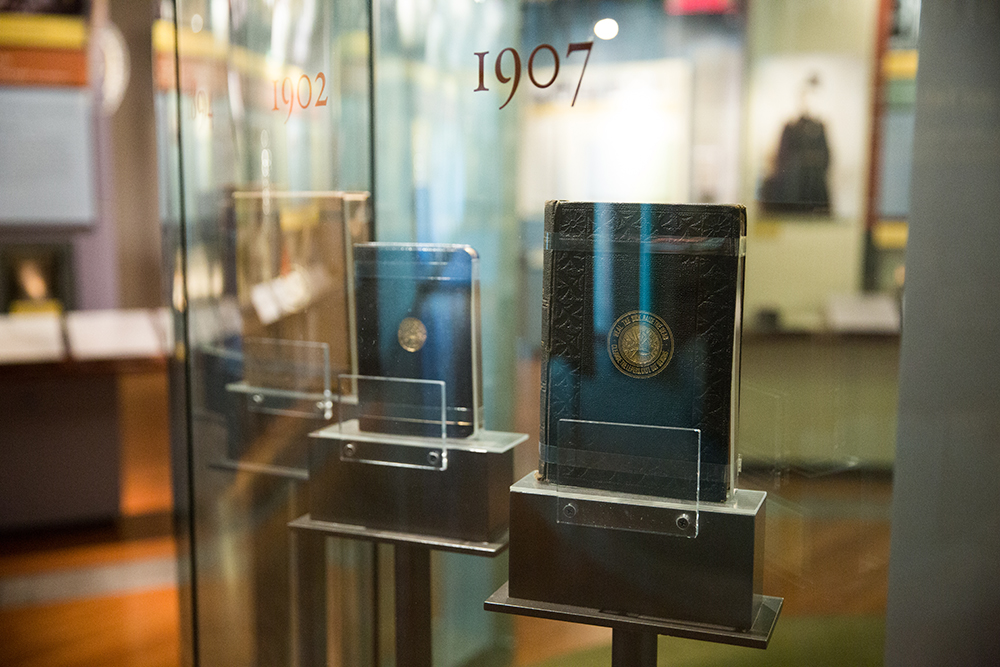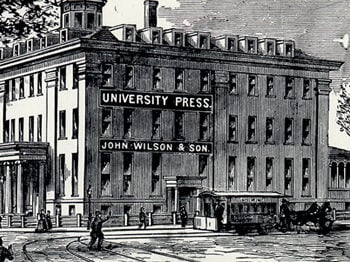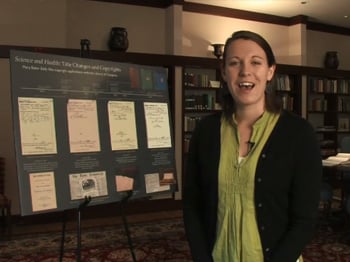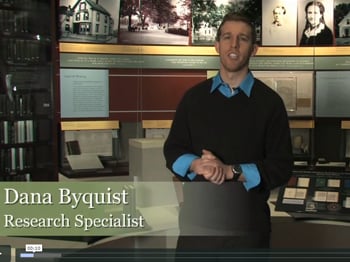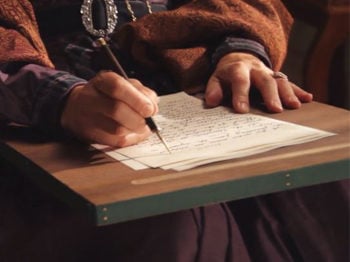In October 2014, an interactive component of Longyear Museum’s major exhibit was completed. Called “Exploring Mary Baker Eddy’s Revisions of Science and Health with Key to the Scriptures,” this interactive section uses touch-screen technology to provide an overview of Mrs. Eddy’s revisions of Science and Health from 1875 to 1910. Editor Jean Angier spoke about the interactive exhibit with Stephen Howard, Director/Curator at the time.
Interview
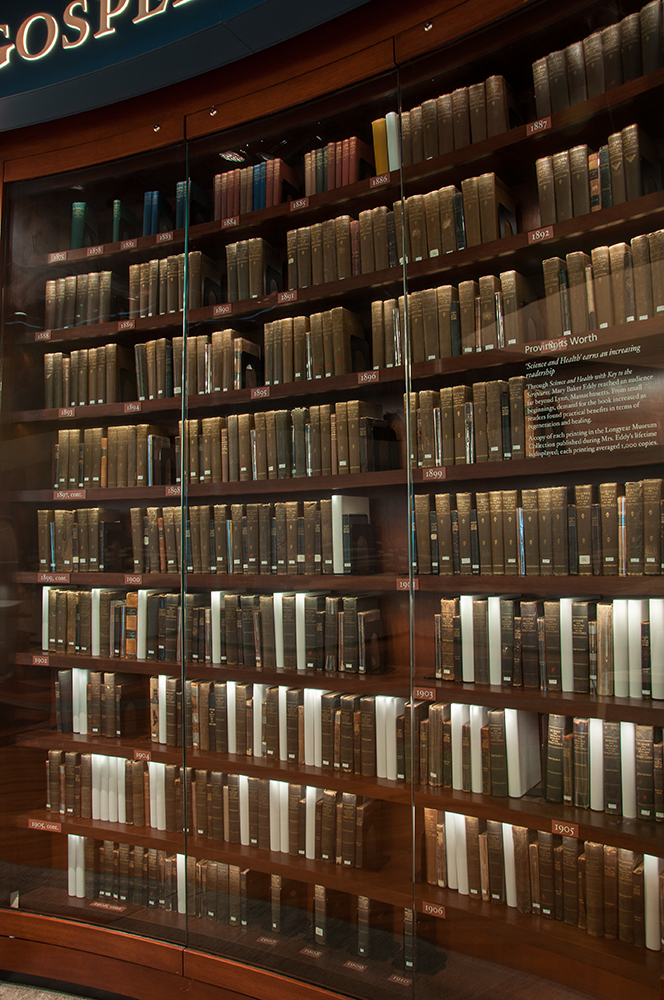
JA: The interactive exhibit will be a fascinating addition to the major exhibit. Before we talk about it, could you share some thoughts on why Mrs. Eddy revised the textbook?
SH: Mrs. Eddy herself found she had to address that question. She explains, “I have revised Science and Health only to give a clearer and fuller expression of its original meaning” (Science and Health, p. 361). I think it’s fair to say that it was her expression of Christian Science that she revised, not Christian Science.
JA: So you would see her revision work as a refinement of statement not a change of message?
SH: Exactly. Also, she herself was growing. Further along in the same paragraph, she writes about how her ceaseless Bible study led to revision: “…hence the many readings given the Scriptures, and the requisite revisions of SCIENCE AND HEALTH WITH KEY TO THE SCRIPTURES.”
JA: Standing here in the exhibit, I see hundreds of copies of Science and Health, all printed during Mrs. Eddy’s lifetime. Is each one a revision of the textbook?
SH: No. Many editions of Science and Health are virtually identical. The word “edition” is often used where “printing” would be more descriptive.
JA: What do you mean?
SH: Take, for example, the sixth edition, which was a major revision. The next major revision was the sixteenth edition. That means that the seventh through fifteenth editions are essentially reprintings of the sixth edition. There may be some changes among the sixth through fifteenth editions, but these are far fewer than those between them and the sixteenth edition.
JA: What distinguishes a major revision?
SH: Such changes as rearrangement of chapter sequence, division of a longer chapter into two shorter chapters, addition of entirely new material, dropping of other material.
JA: One hears that Mrs. Eddy often considered carefully the use of a single word. I suppose the change of a single word could be considered a “minor” change. Yet a single word can significantly shed light on a topic. Do any examples come to thought?
SH: Yes, two interesting ones, quite late in Mrs. Eddy’s work, both in 1910. She changed the chapter title “Christian Science and Spiritualism” to “Christian Science versus Spiritualism” — one word, but a world of difference. With this change, even a casual reader glancing at the chapter title could not suppose there was any affinity between Christian Science and spiritualism.
JA: And the other change?
SH: This also concerns a chapter title. Mrs. Eddy added the word “Unmasked” to the title “Animal Magnetism.” One might call this just a “refinement” — but it’s a powerful one, a single word speaking volumes.
JA: What do such revisions tell us about Mary Baker Eddy?
SH: So many things — her attention to detail, her care to ensure that the textbook’s message would be clear, her mental acuteness at a senior age. Even in her late eighties she was vigorously thinking through the implications of even a single word.
JA: That shows real care for her readers as well as a love for the message itself! Will the interactive exhibit allow people to track such changes?
SH: Visitors can track six passages and see how Mrs. Eddy clarified them over the years. One of these is the opening sentence of the textbook.
JA: “To those leaning on the sustaining infinite …”? How does that sentence differ in earlier editions?
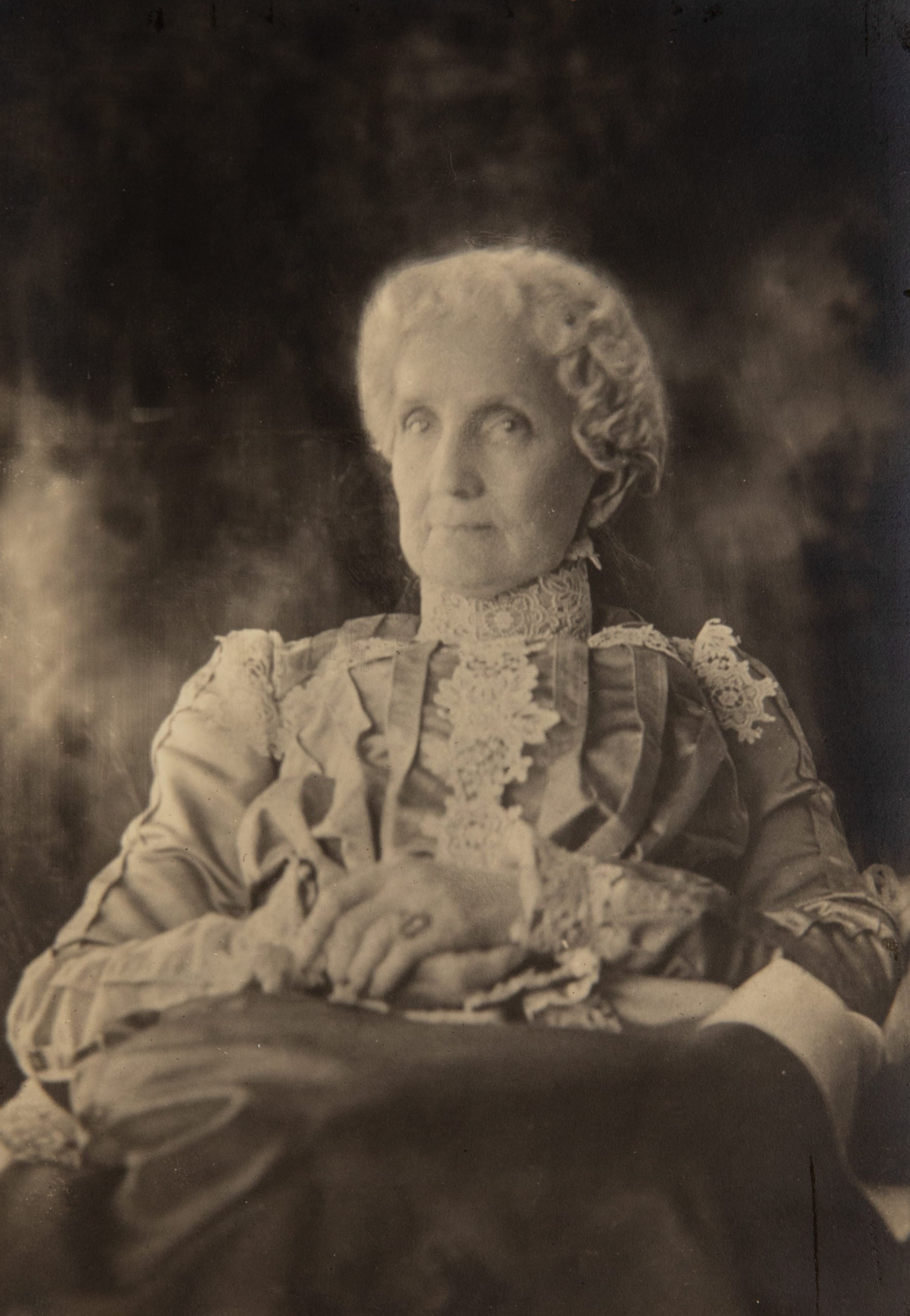
SH: In the first edition, the sentence includes the phrase “the trials of to-day are brief, and to-morrow is big with blessings.” In the sixteenth edition, Mrs. Eddy drops the reference to trials. And instead of tomorrow being big with blessings, she writes “to-day is big with blessings.”
JA: It’s profoundly reassuring that she could make such a change in the mid-1880s, when both she and her young church were facing severe challenges!
SH: Exactly. We today may be too apt to take such a passage for granted. But when we reflect on the fact that she deliberately shifted the emphasis from trials-today-and-blessings-tomorrow to blessings today, and she did this in the midst of challenges, the passage shines with clarity of penetrating vision.
JA: What else is in this sentence?
SH: There are several other points, but let’s look at just one.We immediately notice that Mrs. Eddy originally capitalized the word “infinite” — “the sustaining Infinite” — thus making it clear that this word referred to Deity.
JA: When did she make the word lowercase?
SH: In the early 1900s. At that time she lowercased a number of words that she sometimes uses to refer to Deity, such as Substance, Wisdom, Intelligence, Being, Good. Mrs. Eddy then relied on context rather than capitalization to indicate whether these words referred to Deity.
JA: She was making demands on the reader to keep the context in view, wasn’t she? What sort of format changes did she make?
SH: In 1891 she added marginal headings, and in 1902 she added line numbers. Even such a seemingly small change as line numbering can tell us much about Mary Baker Eddy. What does their addition suggest to you?
JA: The first thing that comes to mind is that they are a courtesy — line numbers facilitate looking up citations from the Christian Science Quarterly. They also suggest to me that Mrs. Eddy expected the book to be studied. When was the concordance to Science and Health first published?
SH: The next year, in 1903.
JA: So when the concordance was published, the line numbers were already in place, ready to help students with research and study. I don’t think I’ll ever look at the line numbers in quite the same way again: they seem to indicate not only Mrs. Eddy’s courtesy but also her expectation that the book be deeply studied.
SH: Right. It’s interesting how much even a format-change can tell us about Mrs. Eddy.
JA: Will the new interactive exhibit make it possible to explore such changes?
SH: Yes, it includes Mrs. Eddy’s revisions of format as well as of text, and it also gives an overview of how the major editions differ from each other.
JA: Is the interactive exhibit like a guided tour of the major revisions of the textbook?
SH: Similar, but not exactly. On a tour, you go where the tour guide takes you. With the interactive exhibit, you chart your own course of exploration. At each stopping point of interest, the interactive exhibit provides you with essential information.
JA: The exhibit is really more than just looking at changes in a book. It’s also a very special window on Mary Baker Eddy’s lifework, isn’t it?
SH: Yes, it brings into view much about her character. She tells us that her developing ability to express Christian Science was correlated to her own following of Christ Jesus: “Its natural manifestation is beautiful and euphonious, but its written expression increases in power and perfection under the guidance of the great Master” (Retrospection and Introspection, p. 27).
JA: Thanks, Steve. I can’t wait for the interactive exhibit to open.
